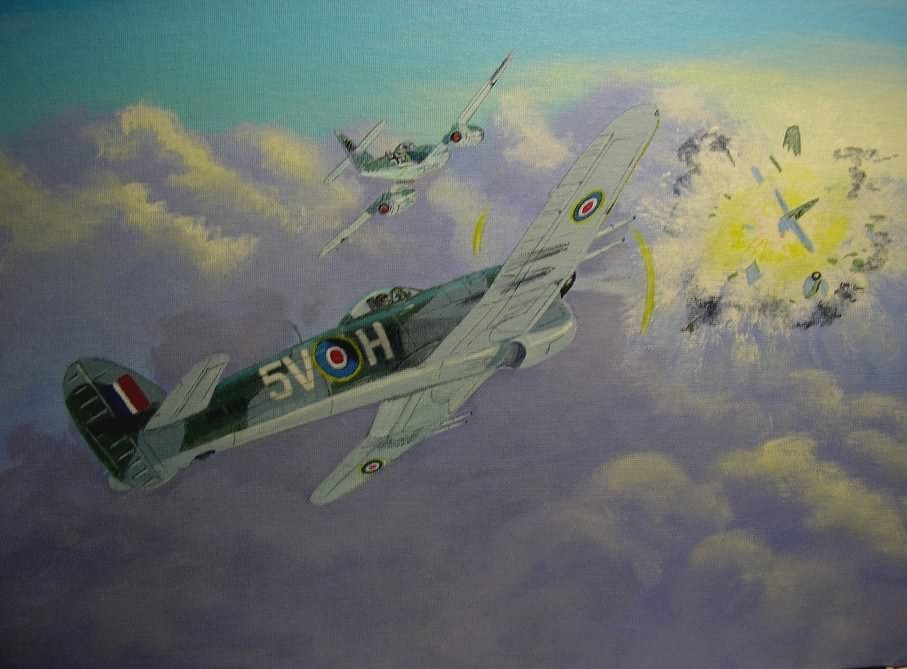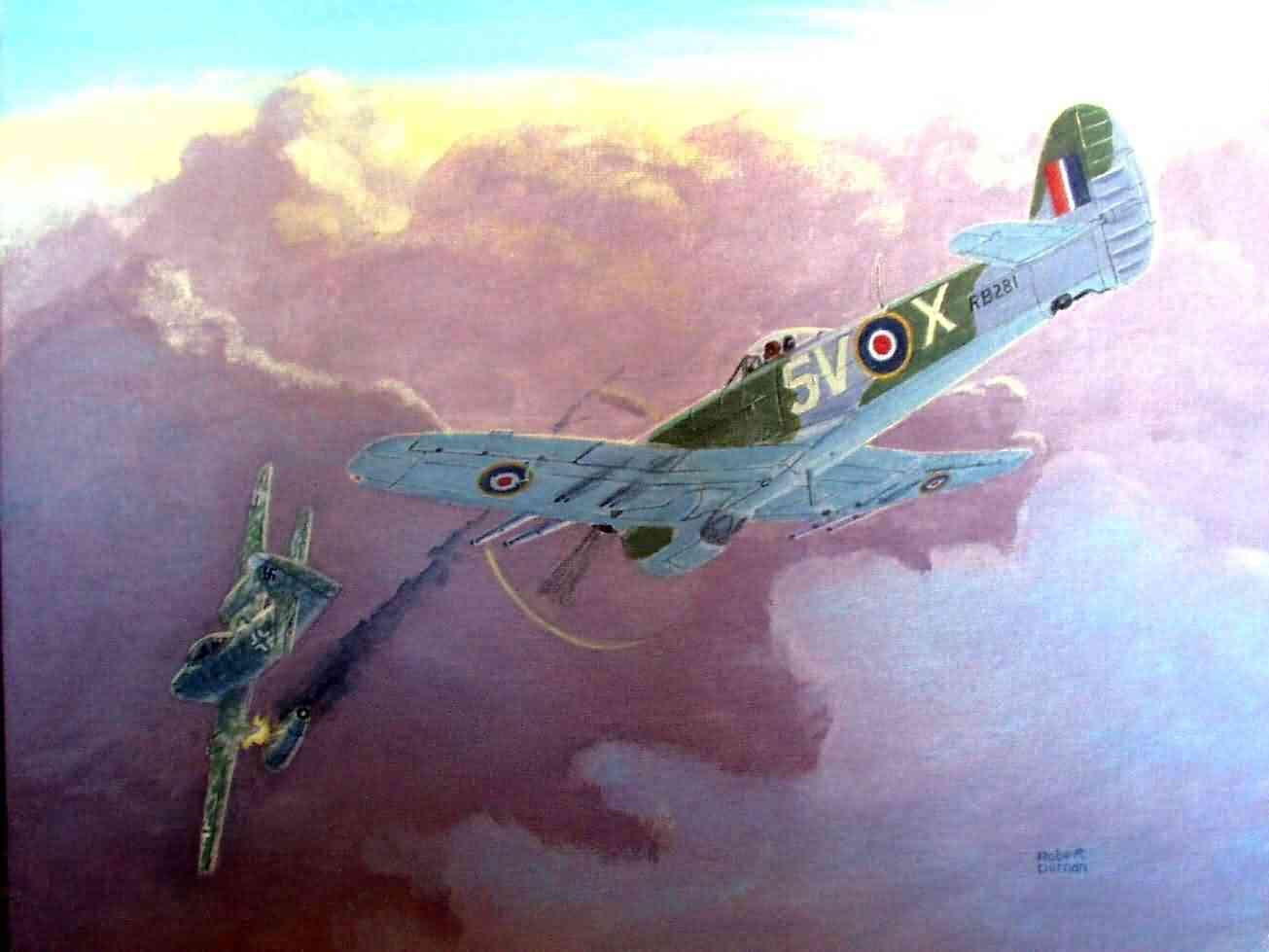|
The first sortie at 0730 hours set the pace. Led by Lyell Shaver, Chuck Jackson, Hugh Fraser and Adam Saunders set out on an armed recce into Germany. Near Legden, north of Coesfeld, they found a passenger train which Shaver and Jackson hit on the second attack, damaging the engine and one coach. After hunting for other targets in the
area (and finding only flak), the section set course for base, passing north west of Ahaus. Let Lyell Shaver take up the story here:
( 14 Feb 1945) "While flying west at 7000 feet, approximately 20 miles from Coesfeld, I observed two Me.262s in line abreast flying wets at 3000
feet. I informed the other pilots and dove to attack. I came in line
astern slightly below the enemy aircraft and opened fire with a short
two second burst at 100 yards. No strikes were observed. I raised my
sights slightly, closed to 50 yards, and again opened fire with a two
second burst. The enemy aircraft exploded in mid air. I flew through the
blast and saw the other Me.262 break off to port. I fired two bursts
from quarter position but did not observe any strikes. I then saw Red
3 (F/O Fraser) attacking from above and to the rear. After both the enemy
aircraft and Red 3 disappeared below cloud, I observed a plume of black
smoke bulging above the cloud. The enemy aircraft appeared to be very
clean or brand new. The underside was pale blue green, and the top was
light mottled camouflage. Approximate cruising speed was 400 m.p.h. Hugh
Fraser saw Shaver's jet explode.

"Typhoon Victory"
This particular event has been vividly
captured to canvas by famous aviation artist Bob
Durnan a former GCA controller with the RCAF.
You can see this and other authentic spectacular works of
Bob, by visiting his
Aviation
Art
website. Copyright©
2005 by
Bob
Durnan. Used with permission.
"I then attacked the port enemy from quarter position and broke down to
port. I opened fire with a three second burst at 400 yards, closing to
50 just as the enemy aircraft disappeared into cloud. At that time I saw
the port engine fall off the Me.262. I pulled up to 1500 feet under
cloud and saw the enemy aircraft hit the ground
(1)
and burst into flames. I
climbed to 8000 feet and during the climb passed an open parachute which
had something burning at the end; but I don't think it was the pilot."
 "Typhoon Victory"
F/O Fraser's victory has been vividly
captured to canvas by famous aviation artist Bob
Durnan a former GCA controller with the RCAF.
You can see this and other authentic spectacular works of
Bob, by visiting his
Aviation
Art
website. Copyright©
2005 by
Bob
Durnan. Used with permission.
Webmaster's Notes (1) Although
the above first person narrative might lead you to believe that F/L
Shaver bagged his second ME-262 of the day, the victory was actually
awarded to F/O Hugh Fraser following the mandatory post-op Intel
debrief
|